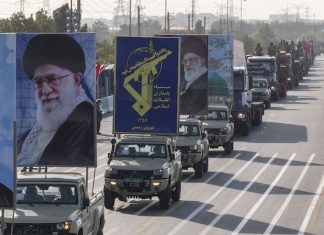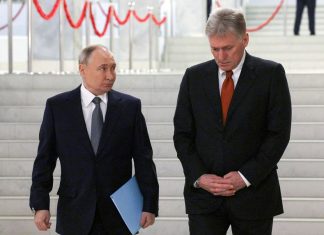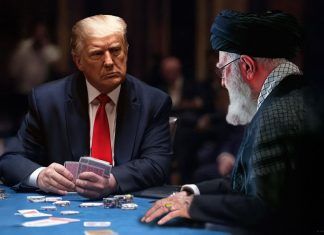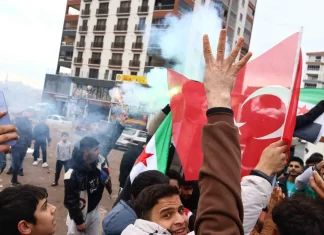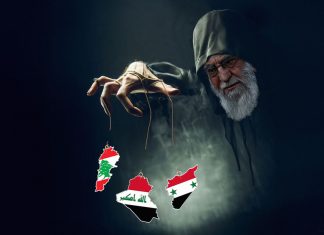By Hamed Mohammadi and Roshanak Astaraki
Water has always occupied an important and unique place in the global culture and literature of Iran. It is no accident that the Persian nouns Abadi and Abadani (
However, since its inception, the Islamic Republic of Iran has never made water “the source of all life” and water management an integral part of its overall policy. Ignorance, negligence, and incompetence have made the country’s water situation extremely critical.
According to the Falkenmark Water Stress Indicator, Iran faces a severe water crisis. Developed by Swedish hydrologist Malin Falkenmark, the system measures scarcity in a particular region as the amount of renewable fresh water available for each person each year. If the amount of renewable water in a country is below 1,700 m3 (cubic meters) per person per year, that country is experiencing water stress; below 1,000 m3, it faces the prospect of water scarcity, and below 500 m3, it is experiencing water scarcity.
Iran is experiencing water stress, given that the amount of its renewable water stood at 1,400 m3 in 2020, when the country’s population was 83 million and its average long-term renewable water resources amounted to 116 billion cubic meters.
Drought and water scarcity have been detrimental to the social and economic lives of the Iranian people. Thousands of villages around the country lie empty as people have been forced to flee their homes in recent years. The shortage of farmland, cattle and sheep feed, and grazing pastures has severely affected agriculture and livestock farming.
Many experts in geopolitics believe that water is a crucial strategic resource. They argue that water scarcity or limited access to water can cause a crisis or exasperate an existing critical situation. They note that it could also pose a security threat to a region, depending on its geography and climate.
The Middle East, which is one of the most densely populated regions in the world, has been struggling with severe drought for some time now. Water scarcity is the principal cause of disputes among various countries in the region and between governments and their people. Sometimes disputes over water rights turn to bloody clashes among local inhabitants.
In April 2015, the commander of the Iranian Army’s Ground Forces Brigadier General Ahmad Reza Pourdastan warned of a “war over water resources in the future.” General Pourdastan, who is currently the head of the Army’s Strategic Studies, said in the same interview that “some paramilitary groups in the region have waged proxy wars on the behest of certain governments.”
The Majority of Iranians Are Affected by Drought, Government Official Says
In comments reported by the Tehran-based Student News Network (SNN) on April 3, 2018, Mohammad Javad Jamali Nobandegani, a former member of the Majlis (Iranian Parliament) National Security Committee, said: “Unbalanced industrial development, illegal wells and a sharp drop in rainfall have turned concerns over water supply into a security crisis in the country.”
Mr. Nobandegani warned against growing fights over water reservoirs among villagers, gradual downward settling of the ground surface (subsidence) caused by drought, and the sudden appearance of sinkholes, some deeper than 500 meters.
Nobandegani also noted that many factories had been built in various parts of the country without considering available water resources in those regions. For instance, many large steel mills operate in parts of the country that face severe water shortages. The steel industry requires access to a reliable water supply. Many of the country’s factories that need a steady supply of water for their operations are owned by government agencies and the Iranian military.
Experience has shown that the Iranian government only considers its interests when controlling and exploiting the country’s water resources to the detriment of people and the environment. Illegal dam projects have partly caused the country’s water crisis, most of which serve the Islamic Revolutionary Guards Corps (IRGC). There have been instances of the IRGC misappropriating water reservoirs that have led to protests and clashes.
Drought is the source of tensions and even war over water resources among governments in the Middle East. Studies have shown that terrorist paramilitary groups in the war-torn countries of the region are planning to gain access to water resources.
The Iran-backed Houthi rebels have recently fought for several weeks to control Yemen’s largest water reservoir, the Ma’rib Dam. They even violated the ceasefire in their efforts to take control of the dam. Meanwhile, the Taliban have seized Dahla Dam, Afghanistan’s second-largest water reservoir.
One of the principal plans of paramilitary groups operating in the Middle East is to seize control of water resources or threaten water and wastewater security, known as “water terrorism.” In less than a year, Iran launched a cyberattack against Israel’s water utilities and contaminated Israeli’s Mediterranean coastline by causing an intentional oil spill from supertankers.
Meanwhile, Iran’s rural economy is all but collapsed. Farmers and those who have been raising livestock for generations in rural regions, and have always been an integral part of the local economy, are now forced to leave their homes and migrate to cities to work as day laborers, porters, or street vendors.
Two years ago, Iran received the highest volume of rainfall in 50 years. However, Iran’s Energy Minister Reza Ardakanian has said the country will experience the driest weather in 50 years this summer.
It would appear that “water stress” is not a priority for the government. The Majlis has passed several resolutions to manage and resolve the crisis, none of which has been implemented. It ratified a proposal by experts to mitigate the water crisis, which recommended changing the current model for planting crops.
President Hassan Rouhani’s government failed to implement the plan. As a result, farmers continued planting crops that use a great deal of water. The practice also disrupted the domestic agriculture market, forcing farmers to throw out some of their vegetables and fruit products, including but not limited to apples, onions, tomatoes, and cucumbers, or sell them below the cost.
The Ministry of Agriculture Jihad is inefficient, or more accurately, completely “inept,” and only caters to the privileged and well-connected insiders. An organized gang that controls the import of food and agricultural products is one of Iran’s oldest and most influential groups, run by senior state officials. Its handprint can be seen clearly in the lack of any regulations on the food and agricultural products market.
While the country faces food insecurity, which is one the most severe consequences of chronic drought, influential gangs are making huge profits by controlling the imports of food products and livestock and animal feed.
For instance, a gang, well-connected to the state, controls livestock and animal feed import. Although importing animal and livestock feeds for the past two years, the group has not delivered the products to the government. Meanwhile, some imports are stored in the customs and border protection’s storage depots, and the rest is sold at inflated prices on the open market to the chicken and livestock farmers. As a result, a good deal of livestock and poultry plants have gone bankrupt.
A sharp drop in production has caused the prices of poultry, red meat, and eggs to go up significantly. The market faces a severe shortage of goods. In a move to “stabilize” the market, the government imported animal protein. However, gangs controlling imports are back in business, making huge profits by importing meat, poultry, and eggs and controlling these products’ distribution and market prices.


